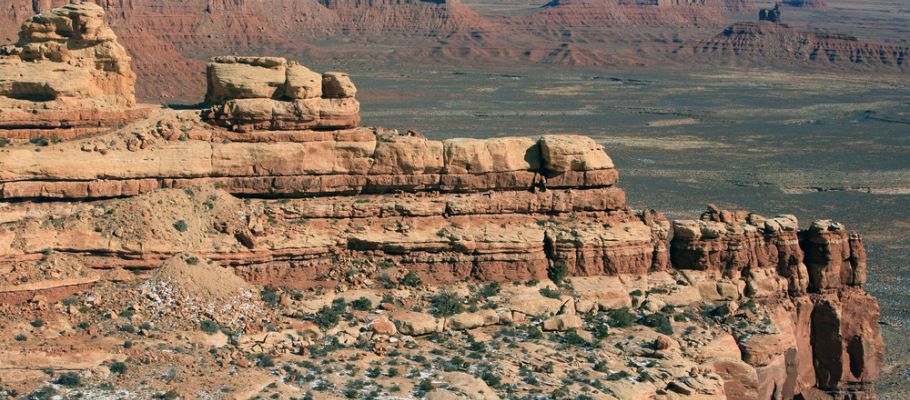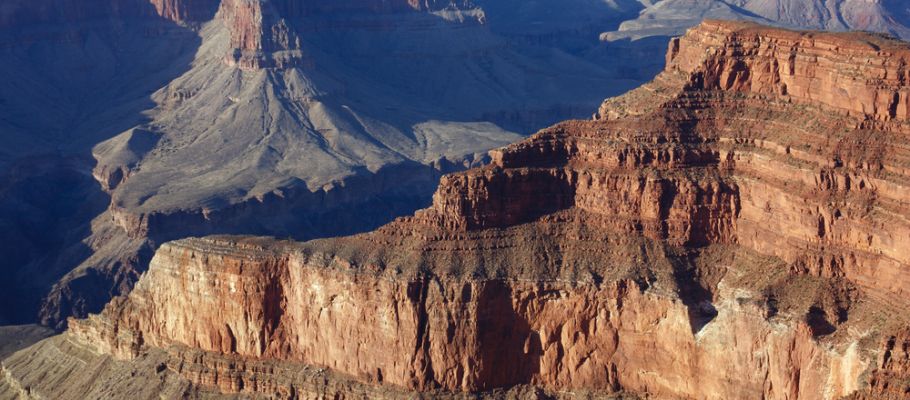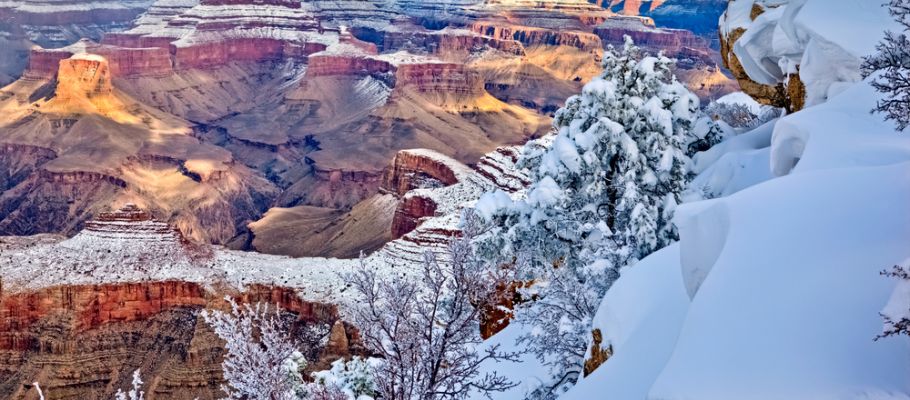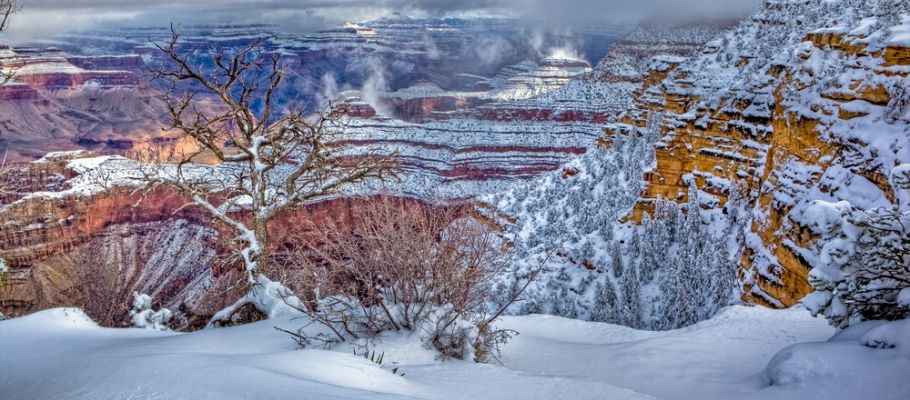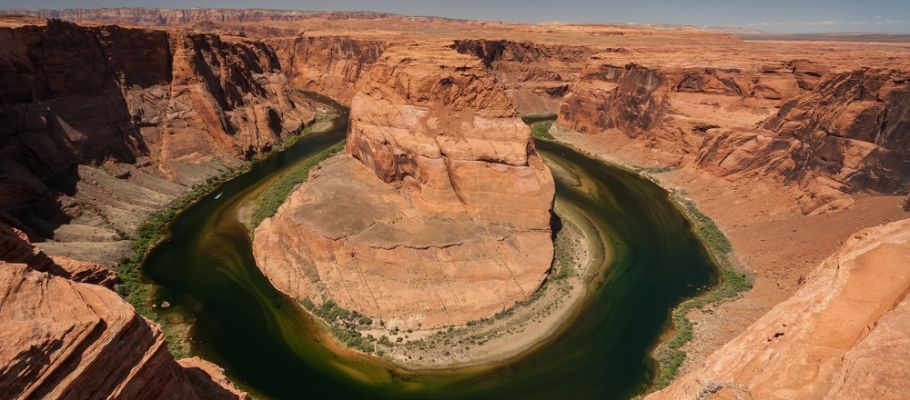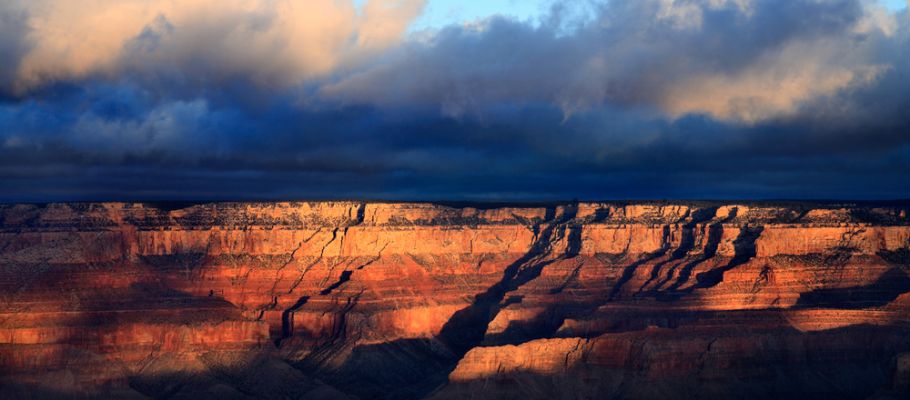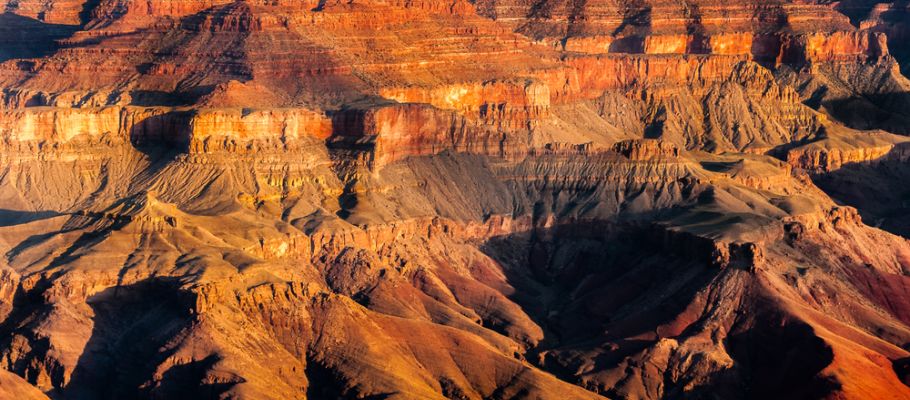The Grand Canyon is a massive gorge or canyon found in the state of Arizona in the United States. The canyon was created by the Colorado River. The Grand Canyon expands 277 miles (466 km) long, 4 to 18 miles (6.4 to 29 km) wide, and has a depth of over one mile (1.83 km).
The majority of the Grand Canyon is protected by national park status. The remaining part of the canyon is on protected Indian reserve territory.
What makes the Grand Canyon a natural wonder?
The Grand Canyon is not individually the steepest, nor widest, nor longest, but it has historically been recognized as the largest canyon in the world. It receives additional wonder recognition because of the incredibly unique and scenic views. The canyon provides visitors with an array of scenic lookouts and experiences that are hard to match.
What are the best ways to see the Grand Canyon?
The national park system has established a number of scenic lookouts that provide visitors with spectacular views of the canyon walls, the river below and the array of picturesque scenes provided by the Grand Canyon. The majority of lookouts are found or experienced from the south rim of the canyon.
The most scenic or mesmerizing view of the canyon comes from the Toroweap Overlook, which is only accessible by three dirt roads. These paths involve several miles and originate in the following places:
- St. George, Utah (97 miles)
- Colorado City (62 miles)
- Pipe Springs National Monument (64 miles)
Many visitors opt for Lipan Point found on the South Rim. This is considerably easier to get to and provides an incredible view of the canyon striations and the Unkar Creek area.
What are the best ways to experience the Grand Canyon?
It is a necessity to drive the south rim and take advantage of the various scenic overlooks that provide picturesque views of the canyons. However, one of the most incredible views, which really allow visitors to understand the breadth and scope of the Grand Canyon, comes from the air. A helicopter ride gives more than a bird’s eye view; it is truly a window into this magnificent wonder.
One of the more adventurous experiences with the Grand Canyon can be found taking a white water rafting trip down the canyon. Having the opportunity to stair up the massive walls of the canyon testifies to the magnitude of this canyon. The white water rafting is also exhilarating adding to your canyon experience.
If you have the time, the most intimate experience of the canyon comes from leveraging one of the traditional hikes. Visitors can take day hikes or extended backpacking trips. The extended hiking trip really delivers an in-depth exploration of the canyon. It is important to note that all overnight camping below the rim requires a back country permit.
Another more leisurely way to reach the canyon floor is on the back of a mule. This gives visitors a taste of the vastness the canyon has to offer from below while having the mule carry the load and do all the work.
When is the best time to visit the Grand Canyon?
The Grand Canyon can be visited any time of the year, however the most common period is over the summer months of June, July and August. The best times to experience the Grand Canyon are debated by photographers, hikers, and other travelers.
The snow capped rims and peaks create some of the most photographic scenes. One of the drawbacks of the winter months is the void in access to the north rim. North rim roads are closed due to weather and the challenge of keeping the roads accessible.
The summer months are the best time to visit because of the array of activities that are available with the warmer weather. This also gives visitors access to the north rim, which does boast the better more scenic views of the canyon.
What is the Grand Canyon weather like?
The weather varies by season. The south rim is often warmer than the north rim. The Grand Canyon is considered an arid climate, but the onset of late summer months and winter brings the rains. The summer rains can be accompanied by thunderstorms, which can create spectacular experiences of the canyon.
Here is a quick look at the expected rainfall for the year:
- South Rim 16 inches (35 cm) & snowfall 60 inches (132 cm)
- North Rim 27 inches (59 cm) & snowfall 144 inches (317 cm)
The summer months are the best time to go, but inside the canyon temperatures can reach 100 F (37.8 C). This can be really hot, but it makes getting wet from white water rafting a more enjoyable experience. These warmer temperatures on the canyon floor sure beat the winder temperatures, which can be slightly below 0 F (-17.8 C).
Photography Tips for the capturing the Grand Canyon
The Grand Canyon provides a variety of first class picturesque scenes. To capture the entirety of what the Grand Canyon has to offer you are looking at both extended stays and multiple trips. The various seasons create completely different compositions when capturing images of the canyon.
Sunrises and sunset bring out and highlight the vibrant colors of the canyon walls. A tripod, patience and the fortune of visiting the Grand Canyon during a lightening thunderstorm can deliver some of the most incredible images.
Travel tips for visiting the Grand Canyon
The most significant tip that any traveler should know is to make your reservations early, particularly if traveling between the months of May through September. There are over 5 million visitors to the Grand Canyon annually, and it is a necessity to secure your spots early to make sure you have best experience possible. Camping spots, lodging and excursions can fill up leaving you wishing you had planned ahead.
